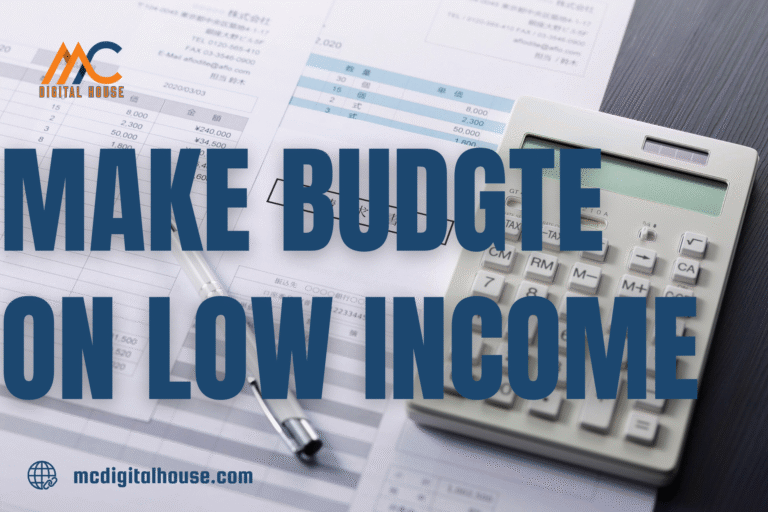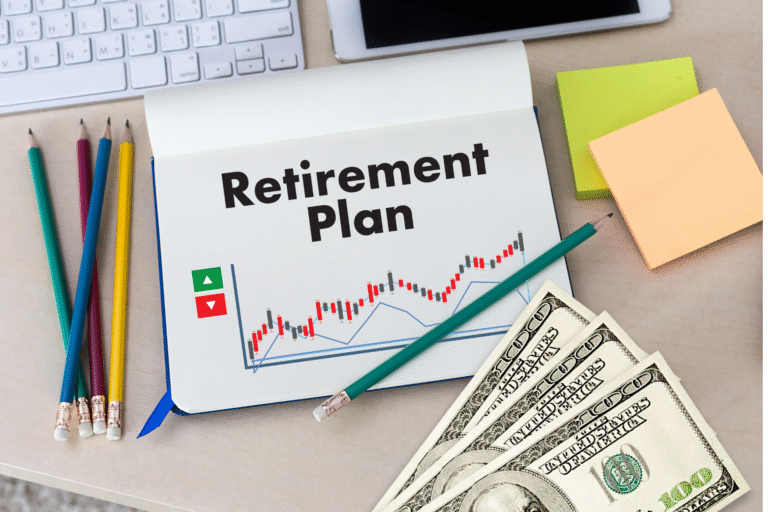Best Retirement Plans for Millennials in the USA — 2025 Guide
Millennials — the generation born between 1981 and 1996 — are now in their late twenties through early forties, a period of life where planning for retirement has become significantly more serious. Millennials, unlike any other era of working adults, are plagued with exceptional financial burdens: student loan debt, high housing costs, inflation, and job markets dominated by gig work and fluid careers.
While millennials have barriers to accumulating retirement savings, there is a distinct advantage for millennials: time. The sooner you begin saving (even minimally — consistently or periodically), the more compounded growth will assist you into retirement. Low-balance, low-commitment retirement accounts have great potential to yield substantial wealth before retirement.
In this guide, you will read about the best retirement options for millennials in the USA, the pros and cons of each, and you will walk away with steps to implement. Whether you are starting your first retirement account or looking to maximize the greatest number of investment vehicles, this article will allow you to make substantially smarter decisions with your finances.
The Importance of Retirement Planning for Millennials
1. Pension Benefits Are Rare
Most baby boomers are used to employer pensions; most millennials cannot rely on one in retirement. Retirement security will largely depend on personal savings.
2. Social Security Is Unknown
While it seems likely Social Security will still be around by the time millennials retire, many experts predict that unless contributions and/or benefits are adjusted sometime by the 2030s, benefits will decrease. Millennials may assume they will need to save and invest as if they will use less.
3. Longer Life Expectancies
Millennials will, on average, likely live longer than previous generations. Because of that, money saved for retirement may have to last 25–30 years or longer.
4. Inflation and Rising Costs
Healthcare, housing, and other normal expenses are increasing in cost. This suggests it is necessary to begin saving and investing as early as possible.
Best Retirement Plan Options for Millennials
1. 401(k) Plans (Employer-Sponsored)
401(k) Plans are one of the most standard and flexible retirement plans for American workers.
Why it’s Best for Millennials
- Many employers offer some sort of match to 401(k) contributions — that’s free money! Take the BBC as an example, they’ll match minus the retirement savings, but expect you to put up your own money, at least up to your maximum match. In this case, your maximum match will be 6% of your salary, so you should contribute at least 6% of your salary.
Contributions will also be tax-deferred (traditional 401k) or will be tax-free in retirement (Roth 401k). Millennials may benefit more from a Roth 401(k) because they anticipate being in a lower tax bracket when they retire.
Pro Tip: Double-check and always contribute to meet the maximum employer match; it is a guaranteed 100% return on your investment.
2. IRA (Individual Retirement Account)
If you do not have access to an employer-sponsored retirement account or an additional account, it’s your best friend.
- Traditional IRA: You can deduct the contribution, but the withdrawals in retirement will be taxed.
- Roth IRA: You make the contribution after-tax; however, withdrawals made in retirement will be tax-free.
Why Roth IRAs are great for millennials
- Young workers typically have a lower income and a lower tax rate. Contributing to a Roth IRA now can be a good financial decision.
- Tax-free growth and tax-free withdrawals in retirement will build wealth.
Contribution limits (2025): Up to $7,000/year ($8,000 if over age 50).
Pro Tip: Open a Roth IRA as soon as possible. Even if the contribution goes as low as $100/month, it can grow to six figures based on compounding. You just have to get it started.
3. SEP IRA or Solo 401(k) (For Freelancers and Gig Workers)
Many millennials do side hustles, freelancing, or run small businesses. They may not be able to rely on a traditional employer retirement account, however.
Best Options
- SEP IRA: Easy to establish. Contribute 25% of your net self-employment income (up to $69,000 in 2025).
- Solo 401(k): Similar to a traditional 401(k), but it’s set up for self-employed individuals who do not have employees. You can contribute as an employee and then as an employer, giving you more flexibility for higher contributions.
Pro Tip: Just because you do not have an employer doesn’t mean you shouldn’t develop retirement savings for freelancers.
4. HSAs (Health Savings Accounts) — A Secret Retirement Tool
If you have a high-deductible health plan (HDHP), you can have an HSA. Established originally for the payment of healthcare services, HSAs are often referred to as a “triple tax-advantaged retirement account.”
- Contributions to your HSA are tax-deductible.
- The investments within the account grow tax-free.
- Withdrawals from the account for qualified health care expenses are tax-free.
Why this is powerful: After you turn 65, HSA funds can be withdrawn for any purpose (not just health care expenses) and taxed at ordinary income tax rates, similar to the way funds are taxed in a traditional IRA.
Contribution Limits (2025): $4,300 for individuals, $8,550 for families with an additional $1,000 catch-up if over 55.
Pro Tip: If you can, pay healthcare costs out of pocket, and allow your HSA investments to grow for decades, indenting it as a stealth retirement account.
5. Taxable Brokerage Accounts
Though not technically a retirement plan, a regular investment account can also fit into your retirement cash flow strategy.
Why would you consider a taxable brokerage account?
- No contribution limits
- Greater flexibility (healthcare answers it any time)
- Best utilized after maxing out tax-advantaged accounts.
Pro Tip: Stick to index fund investments and ETFs to keep your costs low for long-term growth. Also, use tax-efficient ways to hold investments in your account to maximize your lower capital gains tax rates, for just greater than one year or exposure on limited utilization.
6. Target-Date Retirement Funds
If you’re a millennial who is looking for an easy, “set it and forget it” investment, a target-date retirement fund is a good option. A target-date retirement fund will automatically adjust your investment strategy from an aggressive investment strategy to a conservative investment strategy as you approach retirement age.
You can find them in most 401(k) plans and IRAs.
Pro tip: When deciding, select a target date fund for the year near your planned retirement date (i.e., for younger millennials, you might find a target date fund for 2060 or 2065).
7. Employer Stock Plans and ESOPs
Some employers offer employee stock plans or Employee Stock Ownership Plans as part of their benefits. They can be an excellent supplement, but they should not be your primary retirement investment vehicle.
Pro tip: Limit the amount you invest in company stock to no more than 10% of the total value of your portfolio in order to prevent excessive concentration risk.
Retirement Planning Tips for Millennials
Start Early – Even Little Contributions Count
For example, if you start putting away $200/month at age 28 with a 7% return on investment per year, you’ll have over $500,000 at age 65. If you wait until age 38, your retirement balance will be about $240,000 – less than half.
Automate Contributions
Set up your payroll deduction or recurring transfer. Making the savings “invisible” reduces the urge to spend it.
Increase Contributions When You Receive Pay Raises
When you receive a raise, take your savings contribution rate from the base compensation amount and increase it by 1% – 2%. This will prevent you from decreasing your future financial security due to lifestyle inflation.
Diversify Investments
Don’t put all of your eggs in the same basket. Diversify your investments across targeted asset classes, such as combining U.S. and International stocks with some bonds and potentially even some real estate (through REITS).
Be Aware of Fees
High fees on funds will impact your returns. Invest in index funds or index EFTs with the lowest costs. A fee that is even 1% higher can cost you hundreds of thousands of dollars in the long term.
How Much Should Millennials Save?
Many financial planners recommend saving at least 15% of gross income for retirement when accounting for employer matches. This is sometimes referred to as the “15% rule”.
If saving 15% feels too steep at the moment, start saving whatever you can, even if it’s 5%, and increase it as time goes on. In this case, consistency is greater than perfection.
Common Mistakes to Avoid
- Waiting too long to start — Time is your greatest weapon.
- Ignoring an employer match — Never leave free money behind.
- Taking money out early — You could incur penalties and taxes that could decimate your nest egg.
- Chasing risky investments — Stick to long-term diversified growth.
- Not having an emergency fund — If you don’t have savings, you might find yourself using retirement accounts to pay for expenses during times of financial stress.
Conclusion
Retirement planning for US millennials may seem daunting — especially with student debt, rising expenses, and fluctuating markets. But today’s retirement plans — from 401(k)s and IRAs to HSAs and Solo 401(k)s for self-employed workers — provide phenomenal vehicles for creating retirement security.
The biggest hurdle is to begin where you are. Even minor contributions can grow to great sums over the course of decades. Invest at least enough to obtain employer matching, open a Roth IRA if you are eligible, and open an HSA if one is available. With a little discipline and consistency, retirees can have the retirement they need — and a little peace of mind.







